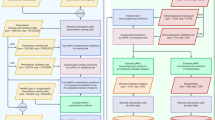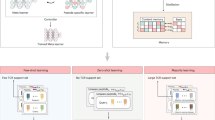Abstract
Activation of T cells requires recognition by T-cell receptors of specific peptides bound to major histocompatibility complex (MHC) molecules on the surface of either antigen-presenting or target cells. These peptides, T-cell epitopes, have potential therapeutic applications, such as for use as vaccines. Their identification, however, usually requires that multiple overlapping synthetic peptides encompassing a protein antigen be assayed, which in humans, is limited by volume of donor blood. T-cell epitopes are a subset of peptides that bind to MHC molecules. We use an artificial neural network (ANN) model trained to predict peptides that bind to the MHC class II molecule HLA-DR4(*0401). Binding prediction facilitates identification of T-cell epitopes in tyrosine phosphatase IA-2, an autoantigen in DR4-associated type1 diabetes. Synthetic peptides encompassing IA-2 were tested experimentally for DR4 binding and T-cell proliferation in humans at risk for diabetes. ANN-based binding prediction was sensitive and specific, and reduced the number of peptides required for T-cell assay by more than half, with only a minor loss of epitopes. This strategy could expedite identification of candidate T-cell epitopes in diverse diseases.
This is a preview of subscription content, access via your institution
Access options
Subscribe to this journal
Receive 12 print issues and online access
$209.00 per year
only $17.42 per issue
Buy this article
- Purchase on Springer Link
- Instant access to full article PDF
Prices may be subject to local taxes which are calculated during checkout
Similar content being viewed by others
References
DeLisi, C. and Berzofsky, J.A. 1985. T-cell antigenic sites tend to be amphipathic structures. Proc. Natl. Acad. Sci. USA 82: 7048–7052.
Rothbard, J.B. and Taylor, W.R. 1988. A sequence pattern common to T-cell epitopes. EMBO J. 7: 93–100.
Hammer, J., Sturniolo, T., and Sinigaglia, F. 1997. HLA class II peptide binding specificity and autoimmunity. Adv. Immunol. 66: 67–100.
Rammensee, H-G., Friede, T., and Stevanovic, S. 1995. MHC ligands and peptide motifs: first listing. Immunogenetics 4: 178–228.
Raddrizzani,L., Sturniolo, T., Guenot, J., Bono, E., Gallazzi,R, Nagy, Z.A. et al. 1997. Different modes of peptide interaction enable HLA-DQ and HLA-DR molecules to bind diverse peptide repertoires. J. Immunol. 159: 703–711.
Jardetzky, T.S., Brown, J.H., Gorga, J.C., Stern, L.J., Strominger, J.L., and Wiley, D.C. 1996. Crystallographic analysis of endogenous peptides associated with HLA-DR1 suggests a common, polyproline II-like conformation for bound peptides. Proc. Natl. Acad. Sci. USA 93: 734–738.
Nigrin, A. 1993. Neural networks for pattern recognition. MIT Press, Cambridge, MA.
Beale, R. and Jackson, T. 1990. Neural computing: an introduction. Hilger, Bristol, UK.
Weiss, S.M. and Kulikowski, C.A. 1991. Computer systems that learn. Morgan Kaufman Publishers, San Mateo, CA.
Brusic, V., Rudy, G., and Harrison, L.C. 1994. Prediction of MHC binding peptides using artificial networks, pp.253–260 in: Complex systems: mechanism of adaptation. Stonier, R. and Yu, X.H. (eds.). IOS Press, Amsterdam, The Netherlands.
Brusic, V., Rudy, G., Honeyman, M.C., Hammer, J., and Harrison, L.C. 1998. Prediction of MHC class-II binding peptides using an evolutionary algorithm and artificial neural network. Bioinformatics 14: 121–130.
Zhang, B., Lan, M.S., and Notkins, A.L. 1997. Autoantibodies to IA-2 in IDDM: location of major antigenic determinants. Diabetes. 46: 40–43.
Taid, BD. and Harrison, L.C. 1991. Overview: the major histocompatibility complex and insulin-dependent diabetes mellitus, in: Genetics of diabetes part I. Baillere's Clin. Endocrinol. Metab. 5: 11–228.
Nepom, G.T., Byers, P., Seyfried, C, Healey, L.A., Wilske, K.R., Stage, D. et al. 1989. HLA genes associated with rheumatoid arthritis. Arthritis Rheum. 32: 15–21.
Hammer, J., Bono, E., Gallazzi, F., Bellunis, C., Nagy, Z., and Sinigaglia, F. 1994. Precise prediction of MHC class II-peptide interaction based on peptide side-chain scanning. J. Exp. Med. 180: 2353–2358.
Reece, J.C., Geysen, H.M., and Rodda, S.J. 1993. Mapping the major human T helper epitopes of tetanus toxin. J. Immunol. 151: 6175–6184.
Pette, M., Fujita, K., Wilkinson, D., Altmann, D.M., Trowsdale, J., Giegerich, G. et al. 1990. Myelin autoreactivity in multiple sclerosis: recognition of myelin basic protein in the context of HLA-DR2 products by T lymphocytes of multiple sclerosis patients and healthy donors. Proc. Natl. Acad. Sci. USA 87: 7968–7972.
Salvetti, M., Jung, S., Chang, S.F., Will, H., Schalke, B.C., and Wekerle, H. 1991. Acetylcholine receptor-specific T lymphocyte clones in the normal human immune repertoire: target epilopes, HLA restriction and membrane phenotypes. Ann. Neurol. 29: 508–516.
Ashton-Rickardt, P.G. and Tonegawa, S. 1994. A differential-avidity model for T-cell selection. Immunol. Today 15: 362–366.
Miyata, Y. 1991. A user's guide to PlaNet 5.6. Computer Science Dept, University of Colorado, Boulder, CO..
Brusic, V., Rudy, G., Kyne, A.R., and Harrison, L.C. 1997. MHCPEP, a database of MHC-binding peptides: update 1996. Nucleic Acids Res. 25: 269–271.
Rumelhart, D.E., Hinton, G.E., and Williams, R.J. 1986. Learning representations by back-propagating errors. Nature 323: 533–536.(1986).
Zurada, J.M. 1992. pp 41–42 in Introduction to artificial neural systems. West Publishing Company, St. Paul, MN..
Forrest, S. 1993. Genetic algorithms: principles of natural selection applied to computation. Science 261: 872–878.
Sinigaglia R, Romagnoli, P., Guttinger, M., Takacs, B., and Pink, J.R.L. 1991. Selection of T-cell epitopes and vaccine engineering. Methods Enzymol. 203: 370–386.
Hammer, J., Gallazzi, F., Bono, E., Karr, R., Guenot, J.M., Valsasnini, P. et al. 1995. Peptide binding specificity of HLA-DR4 molecules: correlation with rheumatoid arthritis association. J. Exp. Med. 181: 1847–1855.
Harrison, L.C., Honeyman, M.C., Trembleau, S., Gregori, S., Gallazzi F, Augstein, P. et al 1997. A peptide-binding motif for I-Ag7, the class II major histocompatibility complex (MHC) molecule of NOD and Biozzi AB/H mice. J. Exp. Med. 185: 1013–1021.
Author information
Authors and Affiliations
Rights and permissions
About this article
Cite this article
Honeyman, M., Brusic, V., Stone, N. et al. Neural network-based prediction of candidate T-cell epitopes. Nat Biotechnol 16, 966–969 (1998). https://doi.org/10.1038/nbt1098-966
Received:
Accepted:
Issue Date:
DOI: https://doi.org/10.1038/nbt1098-966
This article is cited by
-
AIV polyantigen epitope expressed by recombinant baculovirus induces a systemic immune response in chicken and mouse models
Virology Journal (2020)
-
In silico quantitative prediction of peptides binding affinity to human MHC molecule: an intuitive quantitative structure–activity relationship approach
Amino Acids (2009)



